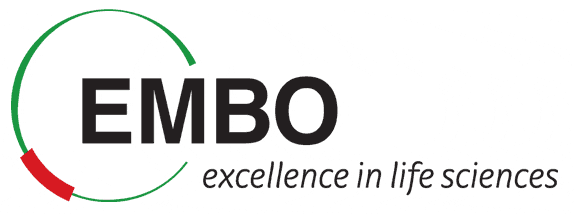Biology and prediction of intrinsically unstructured peptide regions
PART 1
Presentation Slides:
Prediction of protein disorder
Exercise 1
DISPROT database and analyzing calcineurin A
-
Find calcineurin A (PP2BA_HUMAN) in DISPROT www.disprot.org
You can start from UNIPROT, it has a link to DISPROT or search DISPROT directly by keyword (sequence search does not work).
- What kind of information can you find on this page?
- Which regions are marked as disordered in DISPROT?
- Which regions are marked as ordered DISPROT?
- By what experimental techniques?
- What is the role of the disordered segments?
(DP00092)
Exercise 2
Disorder prediction methods
- Collect prediction outputs for calcineurin A using various methods
The input can be:
- the amino acid sequence in FASTA format
- amino acid sequence in raw format (without header)
- UNIPROT ID or accession number
Please note, some methods are sensitive to line breaks. Minimum and maximum length of sequence
Some disorder prediction methods:
- IUPred http://iupred.enzim.hu
- Globplot http://globplot.embl.de/
- PONDR-FIT http://www.disprot.org/pondr-fit.php
- PredictProtein http://ppopen.informatik.tu-muenchen.de/ (MD, UCON, Norsp, Profbval)
- DISOPRED3 http://bioinf.cs.ucl.ac.uk/psipred/ (choose Disopred2 and 3 option!!!)
- or any other method you like.
- Do the predictions agree with the experimental characterization of disorder?
- Do the predictions agree with each other?
- Which method predicts the most disorder?
- Note the differences in the running time of the methods.
Exercise 3
MobiDB database
- Find calcineurin in MOBIDB http://mobidb.bio.unipd.it/entries/Q08209
You can find the output of several other methods there.
- Which regions are predicted as disordered by the majority of methods?
- Which regions have matching PDB structure?
- Can you find regions that cannot be unambigiously assigned? What could be the reason for that?
Exercise 4
Analyze DISPROT DP00039 : a highly disordered protein
- Predict protein disorder for DISPROT DP00039
- Count number of positively charged amino acids
- Count number of negatively charged amino acids
- Calculate net charge (or use the protparam server)
- Check low complexity segments (you can take these from PFAM through uniprot)
- Check PFAM domains
Is there a contradiction between PFAM domain assignments and predicted disorder?
Exercise 5
Finding suitable targets for structure determination.
One of the main applications of disorder prediction methods is to find regions that are suitable for structure determination
-
Which region of this protein would you try to crytallize?
>mystery protein MMQDLRLILIIVGAIAIIALLVHGFWTSRKERSSMFRDRPLKRMKSKRDDDSYDEDVEDD EGVGEVRVHRVNHAPANAQEHEAARPSPQHQYQPPYASAQPRQPVQQPPEAQVPPQHAPH PAQPVQQPAYQPQPEQPLQQPVSPQVAPAPQPVHSAPQPAQQAFQPAEPVAAPQPEPVAE PAPVMDKPKRKEAVIIMNVAAHHGSELNGELLLNSIQQAGFIFGDMNIYHRHLSPDGSGP ALFSLANMVKPGTFDPEMKDFTTPGVTIFMQVPSYGDELQNFKLMLQSAQHIADEVGGVV LDDQRRMMTPQKLREYQDIIREVKDANA
DisMeta is another disorder prediction server that was developed specifically for construct desing for X-ray crystallography. It is a slow method, so the precomputed prediction result can be found here: DisMeta results
- Check, which region has a structure?
Blast the sequence against Uniprot or PDB, or do a Blast against the PDB.
Excercise 6
Characterize human N-WASP (O00401) protein from the viewpoint of order and disorder
- You can check PDB structures for this protein here: http://www.rcsb.org/pdb/protein/O00401
-
Find PFAM families and check their type
- Click on the domain
- Click on “Curation and model”
-
Check type:
- domain
- family
- motif
- Find low complexity regions. Which amino acids dominate in the low complexity region?
- Predict disorder (e.g. with IUPred)
- Which regions would you call disordered?
PART 2
Finding functional regions within IDPs
Exercise 7
Disordered binding regions for N-WASP
- Using the accession number for human N-WASP, find the data for this protein in the IDEAL database IDEAL http://www.ideal.force.cs.is.nagoya-u.ac.jp/IDEAL/
- Can you find regions for this proteins that are annotated as disordered binding regions (called ProS in this database) ?
- Predict disordered binding regions using ANCHOR http://anchor.enzim.hu
Can you find predicted binding regions for this protein?
From what you know about this protein, does the prediction is supported by experimental data?
Exercise 8
Disordered binding regions for human p53
- Predict disordered binding regions for p53 Use ANCHOR http://anchor.enzim.hu The DISOPRED results can be found here : DISORPED
-
Check IDEAL to find regions that are involved in forming complexes
Focus on the C-terminal region- How many different binding partners can you see there?
- What type of secondary structures they adopt in the complex
check PDB:
- 1ma3
- 1h26
- 1jsp
- 1dt7
- How well predictions agree with known binding region?
- Check the predicted secondary structure for this protein (using PSIPRed that comes with DISOPRED) What is the predicted secondary structure for the C-terminal region?
Exercise 9
Filtering motif hits
Dynein light chain protein binds to disordered segments that have a TQT binding motifs. One of its known interaction partner is FA83D ( Q9H4H8 ) with the region VGTQTS.
We found the same sequence in the protein ASNSD1.
- Do you think it can be a valid binding partner?
Hint: Predict disordered binding regions (e.g. with ANCHOR)
You can add the VGTQTS motif to the search too in the motif window
Is the matching region predicted to have a disordered binding region?
Exercise 10
PED database
- In the PED database find the enrty corresponding to Sic1 PED5AAC This entry contains the ensemble of the fuzzy complex between Sic1 and CDC4.
- How many conformers are in ensemble 3?
- What is the largest and smallest radius of gyration in ensemble 3?
Exercise 11
Prediction binding sites based on patterns of conservation
- Collect the sequence for uniprot entry Q9UK97
- Predict disordered binding regions using ANCHOR
- Run the prediction for this entry using the SlimPrints server http://bioware.ucd.ie/~compass/biowareweb/Server_pages/slimprints.php
- Which is the most significant hit? Look at the alignment. Which positions are the most conserved in this region?


